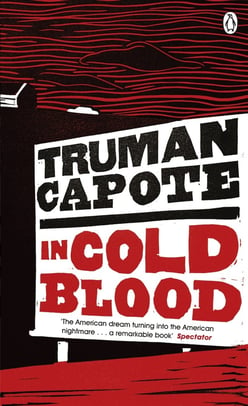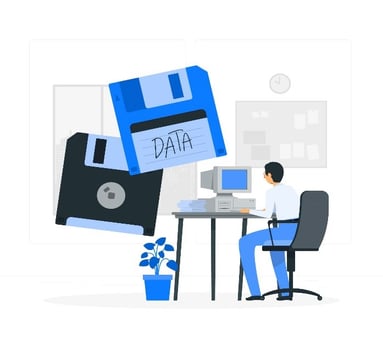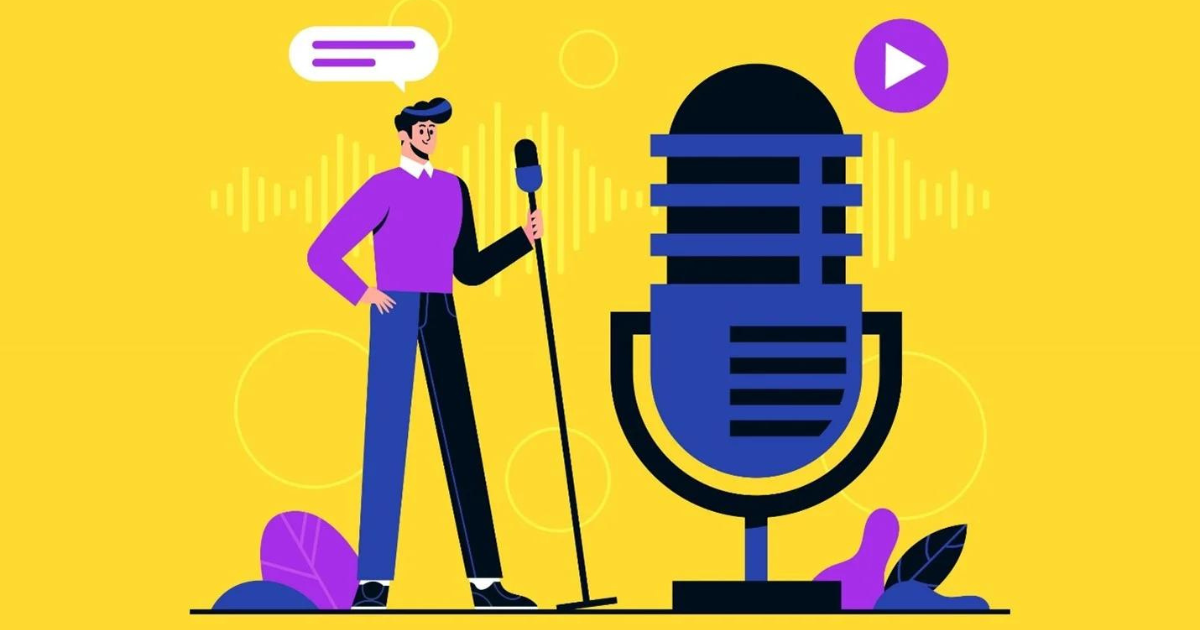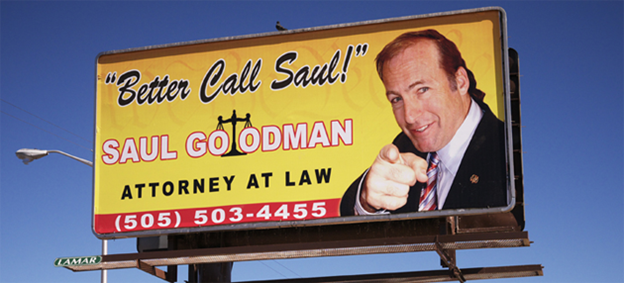What True Crime Podcasts Teach Legal Professionals
We are a nation obsessed with all thing’s true crime. From limited series to podcasts, documentaries to novels brimmed with all the gory details, the true crime genre has never been hotter, and we are eating it up.
For the public, the phenomenon of obsessing over serial killers, grifters and criminal masterminds may stem from some combination of voyeurism and deep seeded psychological issues better left on the therapist couch. But, for those of us that live at the intersection of crime, evidence, and the never-ending quest to uncover the truth, this true crime fixation can become something far more impactful. With each new podcast that delves into the quest for key evidence, the impact of surprising snippets of digital footprints and the winding road to justice in the criminal justice system, the legal true crime junkie has an opportunity to learn and refine their digital sleuthing skills.
Whether you are a law student, a rainmaker in the corner office, a legal technologist or the savvy paralegal that holds a case team together, there is much to learn from these true crime shows.
Not so Novel Obsession

The obsession with real life true crime stories is not something new. The first big wave shows up in pop culture as far back as when "Gilligan's Island" and "The Beverly Hillbillys" topped the television charts. The explosive novel "In Cold Blood" by Truman Capote exploded on the pages of the New Yorker in 1965 and then as a full-length novel in the following year. The story of senseless murder of the 4 members of
the Clutter family in their own home nestled in a tiny corner of Everytown America went from relative obscurity to the silver screen of Hollywood and became the top selling true crime thriller of all time. And just like that, the genre of true crime was born!
Capote's masterpiece was not the first foray into thrillers, who-dun-its, or even courtroom-based drama. The earliest televised crime drama dates to the 1938 BBC show, Telecrime, where the audience assessed the evidence and tried to solve the crime for each episode before TV police detective, Inspector Holt. The popular fixation on crime and criminals goes back even farther. For example, the headlines and popular fixation on London's notorious serial killer, Jack the ripper, continue to this day. What true crime does so brilliantly is it marries the fear and curiosity raised by grisly current events with narrative arc, the forensic and evidentiary process, and the winding path through the criminal justice system.
The fixation on unsolved murders, cold cases and fascinating psychopaths has grown into a full-blown obsession in the last few years. A handful of shows have developed in just a few years’ time and the true crime junkie in many of us still craves more from their weekly podcast fix. The national addiction has become so massive that there is even a show on Hulu called "Only Murders in the Building" that chronicles the true crime podcast inspired antics of Selena Gomez, Martin Short and Steve Martin on their meta journey from podcast fan to true crime solving characters in their very own podcast.
Why Does Legal Love True Crime?
The genre of true crime is "so hot" today, as Paris Hilton might say. The best true-crime Podcasts like "My Favorite Murder" and Sarah Koenig's "Serial" garner tens of millions of views and dollars a month. Netflix and HBO series like "Making a Murderer" dwarf those numbers. The podcasts and series alike offer a deep dive for listeners and viewers into everything from the preliminary forensic investigation to the case file and mechanics of the court case.
For those of us that live in the legal ecosystem, there is something rewarding and fascinating about the journey from crime scene to courtroom or cold case to conviction. Few people, even in the legal space, have the luxury of seeing every step of the process so these snapshots from beginning to end of the legal process are intriguing. Law enforcement, legal technologists, the defense team, and prosecutors all have a front row seat to portions of the case, but these shows offer a comprehensive view across the lifecycle of the current event or cold case alike and generally in 10 hours or less. There are even short form podcasters on Facebook and Youtube that can boil them down in less than a half hour.
Lessons from True Crime
From law school to law firm, it is clear the allure for legal professionals to watch award winning podcasts is irresistible. Shows ripped from the headline cases, cold cases, and the winding journey from crime scene to courtroom and beyond whether it is unpacking the legal issues of a high-profile case, getting insights to aspects of the forensic investigation or courtroom proceedings, or simply seeing the law at work, there is something enticing about seeing your day job writ large for all of popular culture to consume. But is this simply a guilty pleasure or are there practical lessons that practitioners can learn from these shows? I would argue a little of column “A” and a little of column “B”.
There are No Perfect Crimes
Whether you are investigating a murder case or something more along the lines of white-collar crime, very few bad actors are anything like the criminal masterminds in Hollywood blockbusters. A stray hair, random credit card receipt or even haphazard text message can supercharge a podcast series or your investigation alike.
Forensic technologists know this well, even in the event a bad actor deletes their digital footprints, remnants may remain. From data in the Slack space after a file is deleted to unemptied recycle bins or by more advanced forensic recovery methods, deleted may not mean gone forever. Also, there may be cloud backups or other instances of the ESI in question depending on the data source. If all else fails, sometimes the very act of covering digital tracks may be sufficient for a judge to issue a sanction or adverse inference.
People Leave a Digital Fingerprint
Each of us leaves a trail of digital fingerprints and footsteps behind as we traverse our electronic and real lives. The cellphone in your pocket is pinging cell phone towers and mapping your location at this very moment, as was the case in the infamous first season of the Serial Podcast featuring Adnan Syed. Images posted on social media sites like Twitter, Instagram or Facebook all have digital signatures and metadata denoting the time, location and sometimes even the IP address of image upload as well as geolocation of the image itself. For John McAfee all it took was a single fan photo uploaded on social media to unravel the years long missing person investigation and manhunt for him.
The recent sensationalized disappearance and possible murder of a young YouTube celebrity, Gabby Petito, showed this digital fingerprint in action as the police, FBI and internet sleuths sought to locate the young woman and her missing fiancé. Instagram posts in the months leading to the disappearance were used to create both a timeline and map of the couple’s movement. Cell phone messages and cell phone activity identified the window of time that the young girl was determined to be missing.
There was even a TikTok video posted by someone who passed the couples vehicle which was used to locate the woman's final resting place while police body cam footage and 911 audio recordings were used to uncover motive and the prime suspect. The missing person case was solved, although not in the happiest of manners, almost completely via tracking the digital fingerprints Gabby left behind
Evidence Can Come from the Strangest Places
True-crime junkies are no stranger to the impact the unexpected can have on an unsolved case. From bugs and rogue fibers to microscopic DNA or a stray hair, the simplest seemingly inconsequential things can alter the trajectory of a case. The same is true when it comes to digital evidence.
The infamous serial killer, BTK was brought down by metadata on a floppy disk after years in the wind. For Juan Catalan in Long Shot, the keys to his freedom were hidden in footage filmed at a Dodgers game for "Curb your enthusiasm." The key in investigating criminal behavior may not always include Larry David, but the lesson of leaving no stone unturned is a powerful one. Ensure that you have the tools necessary to analyze all the evidence.
Data Doesn't Lie, People Do
True crime podcasts and series are rife with countless hours of interrogation videos, witnesses with spotty memories and less than accurate eyewitness IDs. And this should come as no surprise, because despite what Hollywood might want you to believe, some of the least reliable evidence comes from the people who watched the crime occur. Studies have shown that despite the overwhelming power witness testimony carries, the insights provided are often less than reliable.
The unreliability of witness testimony does not necessarily stem from dishonesty or malevolence, but a combination of factors like stress, time, and the wiring of the human mind itself. It is so prevalent that there is a true-crime podcast dedicated exclusively to people falsely convicted based on witness testimony! Simply put human memory does not work like a video recorder and is susceptible to many external factors. DNA and digital evidence can serve to bolster or debunk what a witness or custodian claims.
Technological Innovation Makes Cold Cases Hot
The pace of innovation in forensics and legal technology has accelerated dramatically over the last few decades. Just over a hundred years ago blood typing and finger printing were introduced to investigations, and not much changed until the early nineties when DNA began to be used in criminal proceedings. For many of the cold cases that are featured on true crime podcasts, especially for the ones that predate the internet and computers, DNA may be the only hope to solve the case and right injustices. In the 30 years since DNA was introduced, the tech has gone from expensive and unreliable to precise and widely used to ID and exonerate alike.
For more recent cold cases, the digital ecosystem we all operate in offers a wealth of pieces of information that can track and establish means, motive, or alibi. As with DNA, the pace of innovation and application of digital forensics innovation is rapidly evolving. Today the Fitbit on your wrist, Apple iPhone in your pocket and Amazon Alexa or Echo on your counter can all provide a wealth of biometric and behavioral data that can (and has) be used as critical evidence in a case.
Don't Google How to Commit a Crime
The internet does not forget, nor, for that matter, does Google. Which is why it comes as no surprise that in cases where a criminal is dumb enough to google the specifics of committing their crime, that very search history can be used as evidence against them. Google can provide either specific keyword search history for certain Ip addresses or even an list of devices connected in a certain "geofenced" location and the information obtained can materially impact case outcomes. The same is true for any inquiries made of Alexa or Siri or any recordings the devices may have made.
Call Your Lawyer!
If my mild obsession with all things true crime podcasts has taught me anything it is this: only a fool represents themself! And this starts at the vey outset. Most of my readers are legal experts in some regard, but I feel like this simple fact should be reiterated! Even if you are a lawyer call one!
Stay Tuned
The true crime podcast obsession sweeping the nation shows no signs of abating, and I am all for that! Digital footprints are increasingly making the job of being a criminal mastermind (and/or not so much of a mastermind) more challenging. There is a wealth of evidence for criminal and civil investigations at our fingertips because of the digital revolution and improvements in forensic and computer forensic capabilities. In the coming years, this intricate web we all walk on in the digital data verse will continue to be pivotal in criminal defenses and prosecution alike. Criminals beware because we have more tools than ever to uncover the truth.




